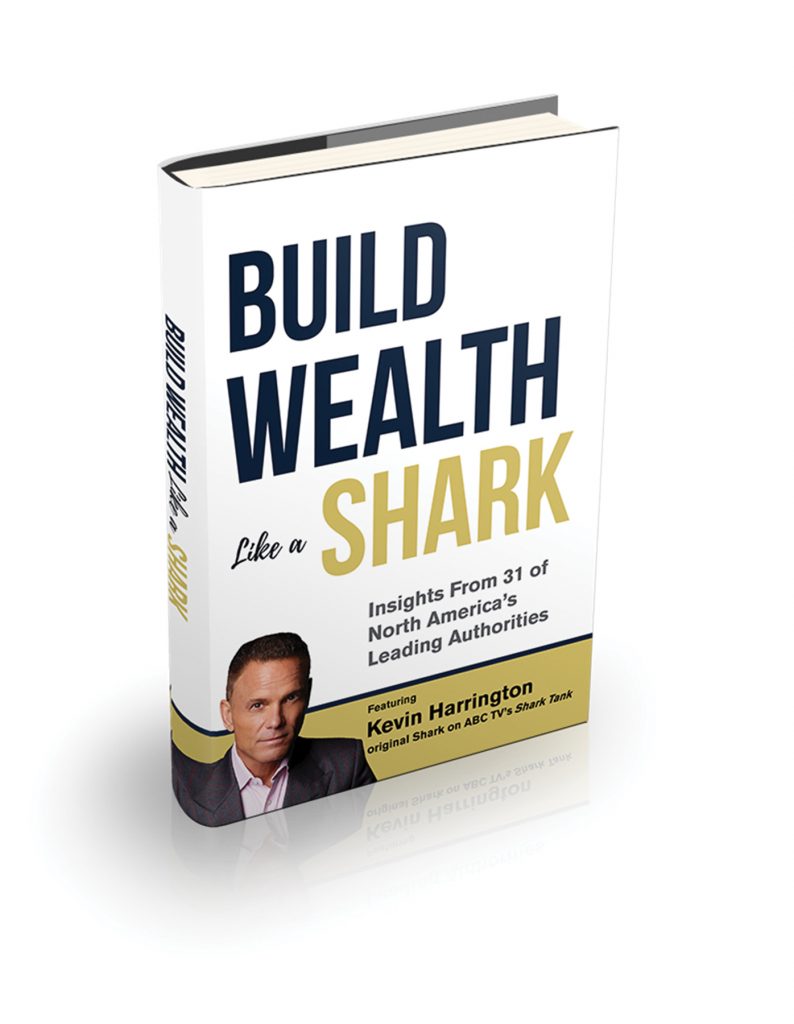A Windsor Wealth Manager has one simple question for people focused on building wealth: “Isn’t it time we talked?”
Story by Matthew St. Amand
Photography by John Liviero
To the uninitiated, the concept of wealth might arouse only one question: “Where do we start spending?” In reality, maintaining and preserving wealth involves answering some tough questions and facing many hard facts. Often, protecting wealth is as challenging as building it.
In the book, How to Build Wealth Like a Shark—by original Shark Tank member, Kevin Harrington, 31 of North America’s leading financial planning experts offer their insights on the subject of building wealth.
Among these industry leaders is Windsor’s own Peter Dobrich, President of Private Financial Group, who contributed a chapter titled “Success to Significance: When you’re gone, what do you really want to leave behind?”
Each contributor chose their own topic, something they felt was imperative that people building their wealth know about. Peter chose the subject of legacy planning, which is much thornier and more controversial than it sounds. The core of legacy planning is asking highly successful people to come to terms with their own mortality. A tall order for anyone.
Peter writes in his chapter: “The truth is, most people fail to deal with their greatest challenges head on… There is an expression I’ve grown fond of over the years: ‘The nail you’re sitting on may not hurt anymore, but it’s the rust that’s going to kill you.’”
The chapter begins with a fictionalized scenario that vividly demonstrates the importance of legacy planning: Alice and Jane are at lunch. The friends are active seniors, married to successful businessmen. Alice’s husband, Henry, recently passed away: “He was nearly ready to pass along his seat at the head of the boardroom table to his eldest son when he dropped dead on the golf course… The doctors said it was a stroke. He would have been 65 that month.”
In this scenario, Henry neglected to plan for the long term and his family paid the price: “The long, painful process of selling off assets—including the family’s vacation homes and vehicles—soon began in earnest. After the first sale, [Alice] wasn’t able to get
anywhere near market value for anything else. Word had gotten out and the vultures were at the gate.”
The scenario continues: “Everything Alice [and Henry] had worked so hard to build… seemed to be under threat. What would her income be at this time next year? What was it now?”

A nightmare for anyone to live through, particularly those who have worked and sacrificed to create a flourishing enterprise.
Peter’s chapter is highly readable and focuses on three aspects of legacy planning: “Behavioural Change: Facing the Issues Head On”, “Equalization: What’s Your Game Plan?” and “Generational Wealth: What’s Your Life Print?”
“Behavioural Change: Facing the Issues Head On” discusses the reality that some business owners are so focused on the “now” or very near future—on their next product launch, or expansion—that planning for a time they are no longer around is just not on the radar. Peter offers several reality checks in his chapter, one of which is: “The thing is, the same alpha-dog traits that drive business excellence can set your family up for future failure.”
In his conversation with Windsor Life, Peter explains: “Planning needs to start now. Regardless of your age, legacy planning should be a regular activity that happens on an annual basis.”
His chapter advises careful framing of the issue. Successful people often have powerful personalities and find legacy planning frustrating. They are used to the instant gratification of their decisions, whether it is buying a new car, or acquiring new equipment for their business. The rewards are instantaneous, or at least, soon to follow.
“I like to persuade my clients to look at laying long-term plans as a reward rather than an obligation of success,” Peter writes. “Time and time again, disaster strikes and a family finds itself torn apart by the poor succession planning of the very business built to benefit and sustain it.”
The second section, “Equalization: What’s Your Game Plan?” begins with a scenario Peter has seen many times: “Imagine a successful business owner has three children. One of them, the daughter, is poised to take over the enterprise. She grew up in the business and is made for the work. That is great, but what about her two brothers, neither of whom works with her? How do they get their fair share?”
As with so many aspects of legacy planning, the subject of equalization is fraught with emotion. It can be a mine field of resentment and hard feelings. This section of the chapter advises: “Equalization doesn’t necessarily mean dividing and distributing one’s assets as neat, equal portions. It is about making sure everybody’s taken care of fairly—whatever that means for their circumstances. Naturally, the more children you have, the more complicated it can get.”
The section continues on the firm footing of common sense, suggesting the solution involves getting the right parties to sit down at the table with an effective intermediary.
Another stark reality business owners face: do their children even share their passion for the business? Often, the heirs of successful business owners grow up knowing only the fruits of the business: the homes, vacations, and vehicles it buys, but are shielded from the behind-the-scenes machinations—with banks, advisors, boards of directors—that keep the moving parts moving.
The fact is, 70 percent of first-generation businesses fail, but fully 90 percent of second-generation businesses fail. As Peter writes: “In many cases, neither parent nor child will allow themselves to stop and ask a critical question: Is the child actually interested in the business?”
“For all the cautionary tales, there are business owners who are grateful and see the value in legacy planning,” Peter says in conversation with WLM. “For those who resist, it may be the right idea, but the wrong time. We only engage with the clients who are open.” He continues: “I try to get my clients to consider how their decisions today impact future generations. Think of a tree: the true measure of wealth is how deep the roots run, not the fruit on its branches.”

The final section of the chapter, “Generational Wealth: What’s Your Life Print?” drills down to the heart of the matter. Peter writes: “Ultimately, the journey that happens in my office leads someone from success to significance.”
The central question is: “What is your life print?”
Peter defines this as “the indelible impression you make on the world and an enduring record of your contribution to your community during your time on earth.”
Legacy planning means coming to terms not only with one’s mortality, but how a person wants to be remembered. Is there a charity they want to continue supporting after they pass? It must be part of the plan.
Learning the true needs and aspirations of the family is also critical to this process. Do the heirs have a desire to continue the business, or would it benefit the family to sell the business upon the business owner’s demise?
Is there a trusted advisor who can take the reins and see to it that the family continues to enjoy the life they have been accustomed to? No matter the answers to these and other questions, the solution is planning—sooner rather than later.
Every person can craft their life print. They can shape the way in which they are remembered when they are gone. The advice from seasoned veteran, Peter Dobrich is: “Start planning now. The financial landscape is always changing. Good planning opportunities are available now. Use them.”




Add comment